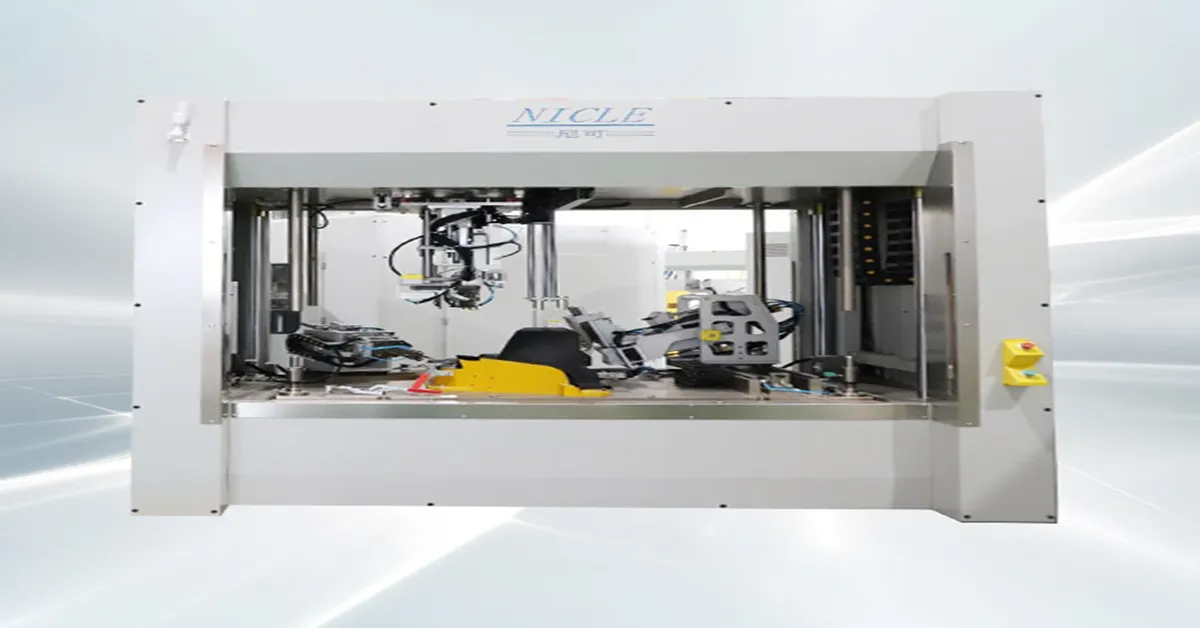In the automotive industry, plastics are crucial for making vehicle parts due to their lightweight, cost-effectiveness, and versatility. Automotive plastic welding can ensure plastic parts perform optimally during a collision.
In this article, we’ll explore the different types of welding techniques used in automotive plastic welding, how they impact the performance of car parts during a crash, and the overall role they play in crash safety and impact resistance.
The Role of Automotive Plastics in Crash Safety
Plastics offer a range of benefits in vehicle manufacturing, especially when it comes to reducing the overall weight of the car. A lighter vehicle means better fuel efficiency and lower emissions. The most common automotive plastic parts include:
- Bumpers: Designed to absorb impact energy and protect the vehicle’s core structure.
- Dashboards: Lightweight and sturdy, they provide a barrier between the driver and hard surfaces.
- Interior panels: Offering both aesthetic appeal and structural integrity.
- Underbody components: These protect sensitive areas like exhaust systems from road debris and collisions.
While plastics are widely used for their weight-saving benefits, they must also withstand the impact forces encountered in a crash. Automotive plastic welding ensures that these plastic parts are securely joined, helping them maintain their integrity during a collision.
Types of Automotive Plastic Welding Techniques
There are several auto body plastic welding techniques that can be used to join automotive plastic parts. Each method has its advantages and drawbacks, and the choice of technique can directly affect how the vehicle performs in the event of a crash.
1. Ultrasonic Welding
Ultrasonic welding is one of the most precise car plastic welding methods. It uses high-frequency ultrasonic vibrations to generate heat at the interface between two plastic parts, causing them to melt and fuse. The process is quick, clean, and effective for small parts, such as trim components or electrical connectors.
Impact on Crash Safety:
- Strength and Precision: Ultrasonic welding creates strong, tight joints, which is important for small plastic components that may need to absorb impact forces.
- Energy Absorption: While it produces strong joints, it might not be the best choice for larger auto body welding applications that need to absorb significant crash energy. The joints may lack the flexibility needed to distribute impact forces evenly.
2. Hot Plate Welding
Hot plate welding is commonly used for larger, more complex plastic parts in vehicles, such as bumpers or interior panels. In this process, a heated plate melts the surfaces of two plastic parts, which are then pressed together to form a solid bond once cooled.
Impact on Crash Safety:
- Durability and Energy Absorption: This technique creates durable joints that are well-suited for parts that must absorb high levels of energy in a crash, such as automotive body welding applications like bumpers.
- Flexibility: The slightly flexible bond created by hot plate welding allows it to absorb impact forces effectively, making it a good choice for key safety components in plastic welding car parts.
3. Spin Welding
Spin welding involves rotating one plastic part at high speed while the other part remains stationary. The resulting friction generates heat, causing the plastic parts to melt and fuse together. This method is often used for round or cylindrical components, like fluid reservoirs or fuel tanks.
Impact on Crash Safety:
- Strength and Sealing: Spin welding is great for creating strong, leak-proof seals, especially for components that need to remain intact under pressure or impact, such as fuel tanks.
- Limited Flexibility: Spin welding is not ideal for larger, more flexible components where energy absorption is key. It’s typically used for smaller parts and less critical auto body plastic welding applications.
4. Laser Welding
Laser welding uses a focused laser beam to precisely melt the plastic interface between two parts. This technique is highly accurate and works well for thin-walled or complex plastic components that require precision.
Impact on Crash Safety:
- Precision and Strength: Laser welding is effective for joining plastic parts with precision, ensuring strong and durable bonds that can withstand moderate crash forces.
- Thermal Sensitivity: While laser welding provides excellent control, it may not be the best choice for thicker or larger plastic parts that need to withstand high-energy impacts, as the localized heat input can cause stress concentrations at the joint.
5. Friction Stir Welding (FSW)
Friction stir welding (FSW) is a solid-state welding process where a rotating tool generates frictional heat to soften the material at the joint interface, causing the plastic parts to fuse without melting. This technique is especially useful for joining thicker or high-strength materials.
Impact on Crash Safety:
- Durability and Mechanical Properties: FSW produces strong joints with excellent mechanical properties, making it suitable for components subjected to significant stress and impact forces, such as automotive body welding.
- Impact Resistance: The mechanical mixing of the plastic during the process helps distribute stress more evenly, improving the part’s resistance to cracking and enhancing energy absorption during a collision.
For manufacturers looking to enhance the performance of plastic parts, understanding the intricacies of automotive plastic welding is essential in designing more impact-resistant and safer vehicles. Additionally, investing in the right plastic weld machine can significantly improve the quality and consistency of the welding process.
How Welding Techniques Impact Crash Performance
The welding technique used has a significant impact on the performance of plastic welding car parts in a crash situation. Several factors affect how well these parts absorb and distribute the energy from an impact:
1. Joint Strength and Durability
The strength of the weld is crucial in determining whether the plastic parts will remain intact during a collision. Techniques like hot plate welding and friction stir welding create joints that are more durable and able to withstand high forces, making them ideal for high-impact areas like bumpers.
2. Energy Absorption
During a crash, the ability of the plastic parts to absorb and dissipate energy can determine the severity of the damage to the vehicle. Welds that are too rigid, such as those created by ultrasonic welding, may fracture under stress, leading to failure of the plastic part.
On the other hand, welding methods that produce slightly flexible joints, like hot plate welding, are better at absorbing and distributing impact energy, which is critical for auto body plastic welding.
3. Flexibility and Crack Resistance
Some welding methods, like ultrasonic welding, may create joints that are too rigid and prone to cracking under stress. In contrast, automotive body welding methods like hot plate welding produce more flexible joints that can help resist cracking and failure, particularly in high-stress areas like bumpers or side panels.
Conclusion
Automotive plastic welding is vital for the safety and performance of plastic parts, especially in crash resistance. The right welding technique affects how well parts perform in a collision. Methods like hot plate and friction stir welding provide strong, flexible joints for high-stress areas, while ultrasonic welding is ideal for small parts. Spin and laser welding are suited for specific applications.
As the industry evolves, plastic welding innovations will improve plastic part safety and performance. Choosing the right automotive plastic welding machines will help manufacturers create durable plastic joints and make vehicles lightweight, cost-effective, and crash-resistant, and ensuring passenger safety.







